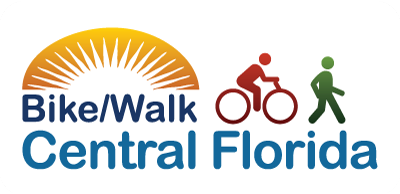
Commuting Via Bicycle: How to make it happen
Commuting via bicycle to work, school or play shouldn’t be a hassle. After all, it will make your day more fun! There are a few things to keep in mind to make your experience as safe, comfortable, and convenient as possible.
Check your ride
First, make sure you have a reliable, roadworthy bike. If you aren’t sure if your bike is or you buy a used bike, take it to your local bike shop or schedule VeloFix to come to your home for an inspection. Annual tune-ups are a good idea to keep your bike rolling smoothly as well.
Before you hop on, say your ABC’s (air, brakes, chain, quick check) to confirm good working order for safety and performance.
And don’t forget lights. It’s a legal requirement that you have a red rear light and white front light after dusk and before dawn. However, it’s a good idea to use them – especially a red rear – at all times to improve your visibility.
Check your gear
Next, be sure to outfit yourself with the right gear. Decide if you’ll need a change of clothes for work and plan accordingly. Although a high-tech cycling kit isn’t essential for the commute, a properly fitted helmet is.

Herronda Mortimer fitting bicycle helmet
Wear your helmet EVERY time you commute. Though they don’t prevent all injuries, helmets are critical to reducing the risk of severe head injuries. Anyone under the age of 16 is required by Florida law to wear a helmet, and anyone who cares about their brain will wear one as well.
Not sure if your helmet is fitted correctly, click here for helmet fit tips.
“As a certified helmet fitter, I would like to stress the importance of having a properly fitted helmet that is snug, secure and covers the forehead,” Beal said. “Having a light weight, waterproof backpack is key to keeping essentials such as a 3-in-1 tool for bicycle repairs, a rain poncho, small first aid kit, snacks like almonds and a change of clothes, if you need it.”
Check yourself
If you haven’t been on a bike in years, you should get comfortable on it before your first commute. Take some time to practice in your driveway, in a park, or on a calm side street before you take your wheels on the road. Practice the range of motions you’ll at some point do on your bike, such as riding with one hand, shoulder checking, stopping quickly, and standing up to pedal.
Review your bike signals, so you can let others know when you plan to turn or stop. Remember that when you ride on the street, you are operating a vehicle too.
Check your bike’s parking spot
Make sure you have safe parking for your bike both at home and at work. You will probably want to invest in a bike lock, and maybe a seat lock. Always take your helmet and other belongings with you into the office to lessen the worry and risk of them being left outside.
Check your route
Be sure to pre-plan the most convenient, safest route for you. Mapping apps can identify the best routes to bike to a destination. They even give estimated times for travel. A combination of back roads and trails might be a safer option than biking along a major roadway. These bike trail resources might be useful. It might take you a bit more time, but it could make your commute much safer and more enjoyable.
Some thoughts from a regular bicycle commuter

Amanda Beal, Department of Health in Seminole County, biking to work
Amanda Beal, who works for the Florida Department of Health in Seminole County, is a longtime advocate of bicycle commuting and shared some thoughts on bicycle commutinig.
“The health benefits of riding my bike to work include getting my daily recommended exercise, increasing my energy levels and reducing stress,” Beal said. “Increasing your heart rate, being aware and alert of your surroundings and sweating helps maintain mental health. I also incorporate deep breathing and tightening the belly while biking for core strength. You will be amazed how energized you are for the workday when you bike to work!”
Biking also has environmental, economic and social benefits. Even though we have seen gasoline prices lower than they’ve been in many years, they’re certain to go up once the economy picks up. Biking saves money in gas and maintenance – the annual cost of operating a car is around $8,000. A bike costs far less to operate and maintain. Plus, there are environmental benefits. A 10-mile round trip commute in a midsize car, five days a week for a year emits 1/3 tons of CO2 – a huge contributor to global climate change.
Plus, more bicyclists on the road also translates to more bike advocacy, and eventually better and safer infrastructure. The Orlando metro area holds the dubious distinction of ranking among the top in the nation for drivers hitting and killing bicyclists and those walking.
“Having more cyclists would bring more awareness and advocacy which equates to more cyclists being alive,” Beal said. “I know that since I have started bicycling and taking courses on how to bike and walk safely that I am much more aware when I am driving. I stop before the crosswalks, not on them anymore. When driving I know that if there is a crosswalk sign to be extra aware of what’s going on outside my vehicle.”

